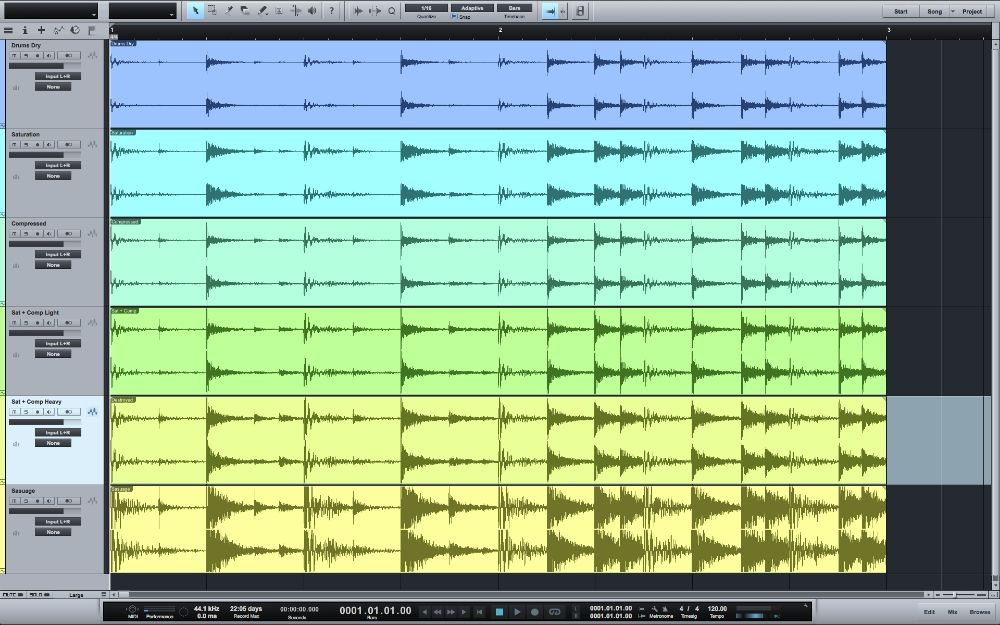BrainSick wrote:Project EX wrote:Dynamics or dynamic range is just the difference in amplitude between the lowest and highest peaks. i.e. a squashed mix will have it's lowest peaks way higher than a non squashed mix, thus having less dynamic range. Amplitude, in this case measured by dBFS does not equal loudness. It's only a relative scale which doesn't give any info on loudness.
Right, that is because the compressor squashes those peaks to make the average of the dynamics closer together. Before compression, the peaks are much taller than the fat pieces of the mix. Compression shortens that gap, thus making the fat section look much larger. But for the sake of wondering, could I ask, "If a mix 'looks' like it is very large all the way across, but when we listen it is not loud- then what makes these 'optical illusion' we are seeing so misleading?" Is it that we percieve amplitude or dynamics of a mix to correlate directly with "loudness"? How do you look at a mix and know it's going to be "loud" based on the wave forms?
Maybe like Fragments, I'm not exactly great with wording my questions and my points. But I am on the same page as you, Project EX. It makes sense what you said. I'm just trying to dig deeper.
I posit that a mix that LOOKS loud, but SOUNDS weak is correlated to a couple of things. Firstly, the dynamics, and second, the quality of the mix. Since loudness is a relative thing, we actively use dynamics to give the listener the impression that something is loud. For example, a track with a smooth, quiet intro that suddenly explodes into a loud drop is going to seem more to have more impact than a track with an intro as loud as it's drop. The latter will seem to have a weak drop, because there isn't enough of a contrast to indicate to the listener that "WOW this track got loud".
And as far as a mix is concerned, you need to take into consideration that what appears to look like a "loud waveform" may not be efficiently consuming it's own headroom. For example, it may have frequencies under 20-30hz or over 18k that aren't being reproduced adequately on a given sound system, but are still being represented by the visual waveform.
Also, a poor mix could make a track sound weak, even when it's waveform looks like a sausage. Say for example that there are 10 elements in a given song, and each element fundamentally takes up it's own space frequency-wise, but because these elements were not wisely EQ'd there are 4-5db of unnecessary fluff to each element. This little bit of 'fluff' not only creates the impression that the mix is sloppy, unrefined, and muddy... it also cumulatively consumes 40-50db of headroom. When you cram the track through a brickwall limiter, thats 40-50db of loudness that you could have consumed more intelligently, and thus have gotten a louder track.
Edit: This thread title is so perfect for this kind of discussion lol.
